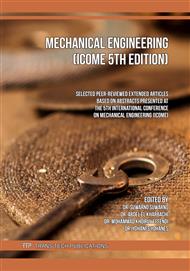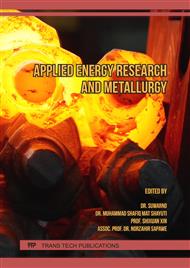p.3
p.11
p.19
p.25
p.31
p.39
p.49
p.57
Toughness Recovery of Welded Pipe API 5L Grade B through Quenching and Tempering Treatment
Abstract:
API 5L Grade B steel pipe used for the oil and gas industries must meet toughness requirement of higher than 27 Joule and hardness value of lower than 248 HV. The welding process during piping installation sometimes generates lower toughness. Thus additional heat treatment was necessary to recover their superior toughness. Quenching from 900 °C into water or oil medium followed by tempering at 550 °C, 600 °C and 650 °C for 1 hour was selected in this study. Charpy impact test was used to access their toughness data, while the hardness was measured using micro Vickers hardness. It was found that the highest toughness of 168 Joule with a hardness of 166 HV1.0 was generated in the welding zone after water quenching followed by tempering at 600 °C treatment. The metallographic investigation reveals fully martensite tempered microstructures. These acquired toughness and hardness values were in accordance with API 5L pipe standard requirements.
Info:
Periodical:
Pages:
19-24
Citation:
Online since:
January 2023
Authors:
Keywords:
Price:
Сopyright:
© 2023 Trans Tech Publications Ltd. All Rights Reserved
Share:
Citation:



